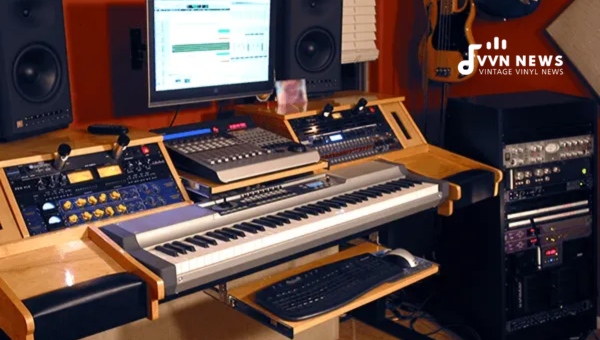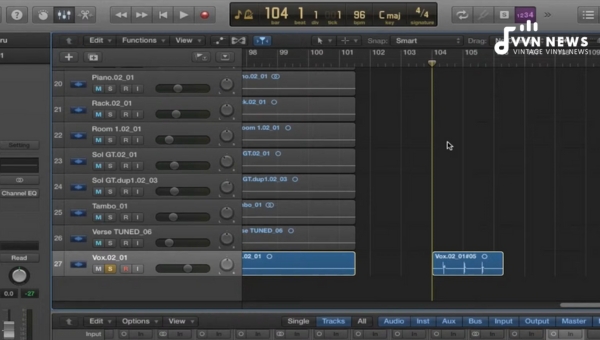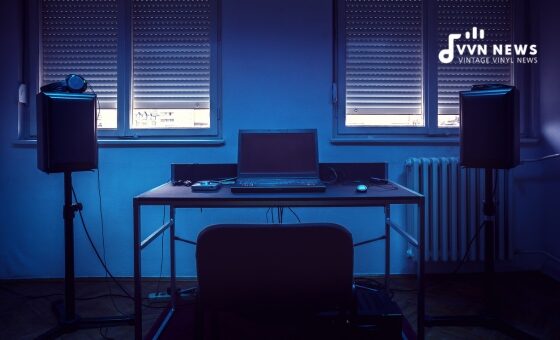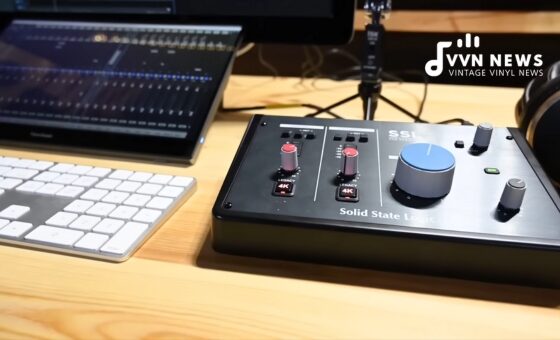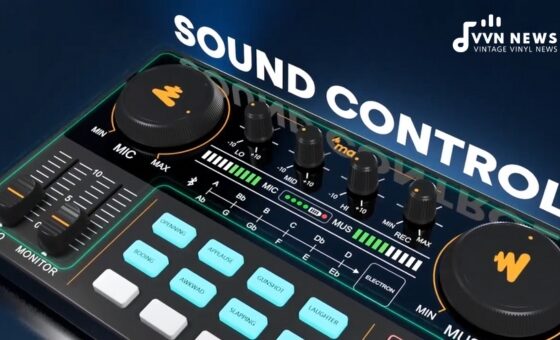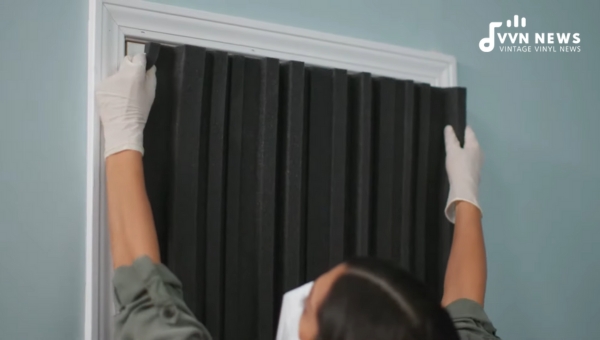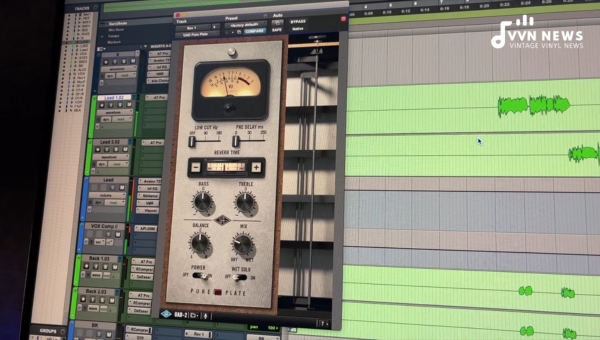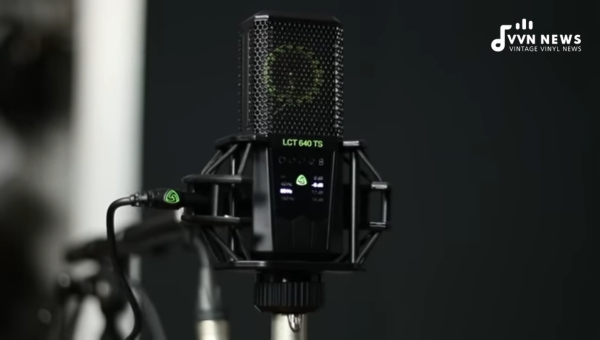I Understand the importance of having a dedicated space to fuel our artistic endeavors. Whether you’re a musician, a painter, or a video editor, a well-designed studio desk can make all the difference in your creative process.
That’s why I’m thrilled to share with you some amazing DIY studio desk plans that will not only elevate your workspace but also save you some hard-earned money.
So, if you’re ready to take your studio setup to the next level, let’s dive into these practical and inspiring DIY studio desk plans.
When it comes to designing a studio desk, there are several factors to consider. Comfort, functionality, and aesthetics all play a crucial role in creating a workspace that promotes productivity and creativity.
With the right DIY studio desk plans, you can customize your desk to fit your specific needs and preferences.
Whether you prefer a spacious work surface or ample storage for your equipment, there’s a DIY option out there for you.
So, let’s explore some incredible studio desk plans that will not only enhance your workflow but also add a touch of sophistication to your studio.
Why Building a DIY Studio Desk is Worth It
When it comes to setting up a dedicated studio space, having a well-designed desk is essential. While you may be tempted to go for a ready-made option, building your own DIY studio desk offers numerous benefits that make it highly worth the effort.
Let’s dive into why building your own desk can be a game-changer for your creative endeavors.
Also Read: 15 Home Studio Must-haves For Comfort & Productivity
Benefits of Building Your Own Studio Desk
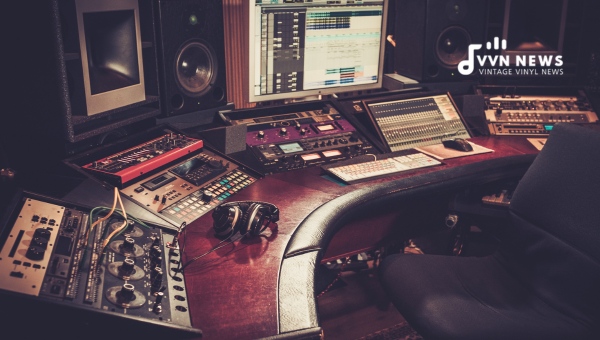
Here are Some of the benefits of Building your own studio Desk:
1. Customization for Specific Needs
One of the most significant advantages of opting for a DIY studio desk is the ability to customize it to meet your specific requirements.
When buying a ready-made desk, you may struggle to find one that perfectly fits your equipment or provides enough storage space.
By building your own desk, you have full control over the design and can tailor it to accommodate your gear, whether you’re a musician needing space for multiple instruments or a video editor requiring ample room for monitors and accessories.
2. Cost Savings Compared to Buying Ready-Made
Another compelling reason to embark on a DIY studio desk project is the potential cost savings. Ready-made studio desks often come with hefty price tags, especially when considering high-quality craftsmanship and additional features.
By sourcing materials yourself and putting in some elbow grease, you can save a significant amount of money while still achieving an exceptional result.
3. Quality Craftsmanship and Durability
Building your own studio desk allows you to prioritize quality craftsmanship and choose durable materials that will ensure longevity.
Unlike mass-produced options that may sacrifice durability for affordability, you can invest in sturdy materials like hardwood or plywood that will withstand years of use and provide excellent support for heavy equipment.
4. Aesthetics That Reflect Your Style
Your workspace should reflect your personal style and inspire creativity. With DIY studio desks, you have complete creative freedom over the aesthetics and design elements employed.
Whether you prefer sleek minimalist lines or rustic charm, you can tailor the desk’s appearance to align with your visual preferences. This allows you to create a workspace that truly inspires and motivates you.
Cost Savings Compared to Buying Ready-Made
The cost savings when building your own studio desk compared to buying a ready-made one can be substantial.
While ready-made options often come with markups for branding and retail margins, DIY enables you to shop for materials at discounted prices or repurpose existing furniture and components. Markdown syntax
For example:
- Markdown syntax
- Salvaging wood from pallets or old furniture can save on costs.
- Utilizing online resources for searching for deals and discounts on materials reduces expenses.
- Sourcing second-hand hardware or repurposing existing equipment can also save money.
By attentively managing your budget and adopting a resourceful mindset, Markdown you can significantly cut down on expenses without compromising quality.
Customization Options for Your Specific Needs
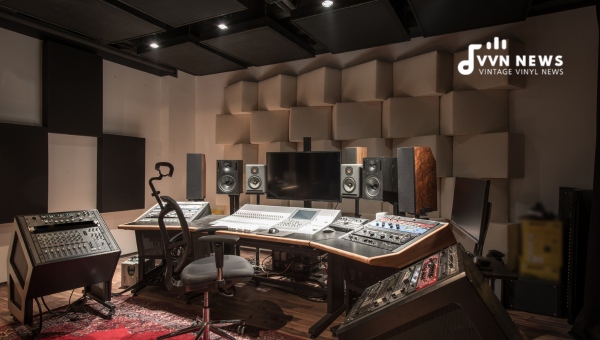
Markdown syntax-DIY studio desks offer endless possibilities for customization based on individual requirements.
By taking the time to evaluate your specific needs, you can create a desk that maximizes functionality and efficiency. Consider the following aspects:
- Size: Determine the ideal dimensions of your desk, considering available space and workflow requirements.
- Storage: Incorporate shelves, compartments, or drawers into the design to keep essential equipment organized and easily accessible.
- Ergonomics: Ensure optimal comfort by customizing height and depth to suit your body posture and reduce strain during long hours of work.
- Wire Management: Integrate cable management solutions like grommets, clips, or trays into the desk design for a tidy workspace free from tangled wires.
With these customization options at hand, Markdown you can build a studio desk that fully caters to your unique needs while providing an aesthetically pleasing work environment.
Building a DIY studio desk offers several advantages over buying a ready-made one. Markdown syntax not only provides an opportunity to customize the desk to suit your specific needs, but it also allows for significant cost savings and the ability to create a workspace that reflects your personal style.
So, roll up your sleeves, unleash your creativity, and dive into the world of DIY studio desk building. Your creative pursuits will thank you for it!
Determining the Optimal Height, Width, and Depth of the Desk
When planning your DIY studio desk, it’s essential to consider the dimensions that will provide optimal comfort and functionality for your workflow. Here are some factors to keep in mind:
Height
The height of your desk should be ergonomically suited to your body. A standard range is between 28 to 30 inches from the floor to the tabletop surface.
However, you can adjust this height to match your own preferences or specific requirements. Markdown syntax using a standing desk converter or adjustable legs can give you added flexibility.
Width and Depth
The width and depth of your studio desk should accommodate all your essential equipment while leaving sufficient space for comfortable working.
Consider the dimensions of items such as computer monitors, speakers, rack mounts, MIDI controllers, or other gear that needs to be placed on or around the desk.
Establish a balance between compactness for space-saving and spaciousness for ease of use.
Incorporating Shelving for Speaker Monitors, Rack Mounts, and Computer Screens
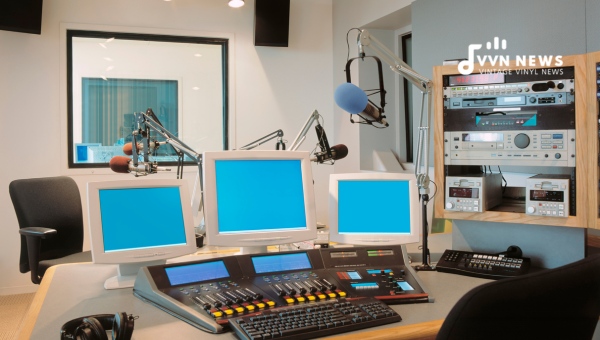
Shelving is a valuable feature that can maximize organization and accessibility on your studio desk. Markdown syntaxConsider these options when incorporating shelves into your design:
Adjustable Shelves
Opting for adjustable shelves allows you to adapt the spacing as needed when accommodating different-sized speaker monitors or rack mounts.
Isolation Pads
Adding isolation pads under speaker monitors on their shelves helps reduce vibrations and improves overall sound quality.
Overhead Monitor Shelf
An overhead shelf mounted above your main workspace can house computer screens or additional speakers without encroaching on valuable tabletop real estate.
Including Slide-out Compartments for Keyboards
Also Read: How To Achieve Low Audio Latency While Recording [2025 Guide]
To enhance convenience and promote ergonomic comfort during music production or editing sessions, slide-out compartments provide an efficient solution. Consider the following when incorporating this feature:
Keyboard Tray
A slide-out keyboard tray keeps your keyboard close at hand while preserving desk space when not in use. Ensure it’s wide enough to accommodate both the keyboard and mouse for seamless navigation.
Ergonomic Design
Consider an ergonomic design for the keyboard tray, allowing for adjustable height, tilt, and distance from your body to minimize strain on your wrists and arms during extended periods of use.
Importance of Cable and Power Management Solutions
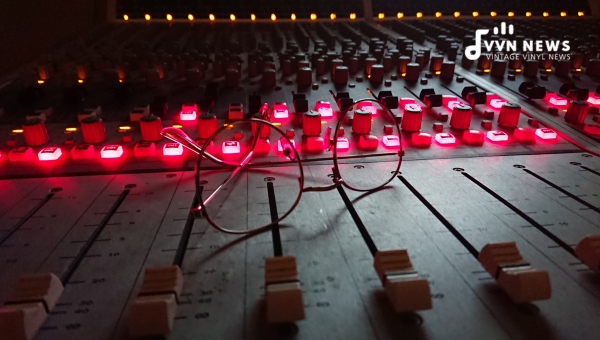
A clutter-free workspace can significantly enhance your productivity. Markdown syntaxEffective cable and power management solutions will keep your studio desk organized while preventing potential hazards. Here are some strategies to consider:
Cable Management Grommets
Built-in grommets provide a neat way to route cables through the surface of the desk, keeping them hidden from view and preventing tangling.
Cable Clips or Trays
Organize cables vertically or horizontally using cable clips or trays attached underneath the desk surface. These accessories prevent cables from falling off or becoming entangled.
Power Strip Placement
Incorporate a power strip within easy reach on the desk’s surface or on a dedicated shelf. This allows you to plug in and turn on/off equipment with ease while minimizing cable clutter.
Choosing Between Cabinets or Additional Rack Space
The choice between cabinets and additional rack space will depend on factors such as storage needs and personal preference. Markdown syntaxConsider these points when making your decision:
Cabinets
- Provide enclosed storage space to keep clutter out of sight.
- Ideal for storing items like paperwork, spare cables, headphones, or other equipment that doesn’t require immediate access.
- Ensure cabinets have proper ventilation if storing audio/video equipment or computer hardware that generates heat.
Rack Space
- Open rack shelves provide convenient access to studio gear such as audio interfaces, preamps, effects processors, or other rack-mountable devices.
- Choose rack shelves with adjustable depth options for compatibility with different-sized equipment.
- Consider rack mounts with built-in cable management features for a cleaner look.
By carefully considering the height, width, and depth requirements, incorporating shelving for specific equipment, adding slide-out compartments for keyboards, implementing cable management solutions, and deciding between cabinets or additional rack space, you can create a studio desk that perfectly suits your needs.
Careful planning and thoughtful integration of these features will result in a functional and ergonomic workspace that enhances your creative endeavors.
Step-by-Step Guide to Building Your Studio Desk
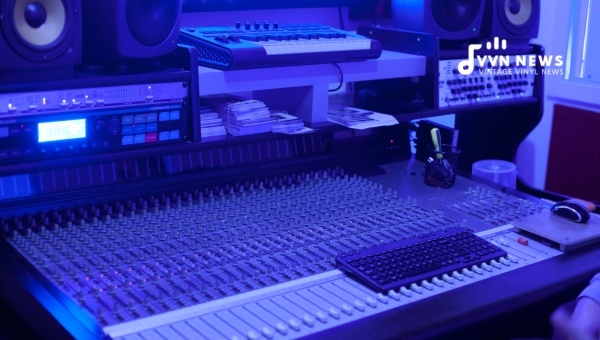
Building your own studio desk doesn’t have to be daunting. With a little planning, preparation, and attention to detail, you can create a desk that perfectly suits your needs. Here is a step-by-step guide that will help you navigate the process smoothly:
1. Gathering Materials and Tools
Before diving into the construction process, ensure you have all the necessary materials and tools handy. Here’s a checklist of what you’ll need:
Materials:
- Plywood or solid wood boards for the frame and tabletop
- Screws, nails, or dowels for assembling
- Wood glue for added stability
- Sandpaper for smoothing surfaces
- Stain or paint (optional) for aesthetics
- Shelving and compartment materials (plywood or MDF)
- Drawer slides (if adding drawers)
Tools:
- Measuring tape for accurate dimensions
- Circular saw, or table saw for cutting wood
- Drill with drill bits for creating holes and driving screws/nails
- Screwdriver or power screwdriver
- Clamps for securing pieces during assembly
- Sanding block or power sander for smoothing surfaces
Also Read: G Flat Minor Triad [Mastering Complex Guitar Chords]
2. Cutting and Assembling the Frame of the Desk
The frame serves as the foundation of your studio desk, providing stability and support. Follow these steps to create a sturdy frame:
- Measure and mark the dimensions of your desk frame on the plywood or solid wood boards following your desired size specifications.
- Use a circular saw or table saw to carefully cut out the pieces according to your measurements.
- Assemble the frame by attaching all sides together using screws, nails, or dowels.
- Apply wood glue at each joint before securing them together to ensure added strength.
3. Adding The Tabletop And Ensuring Stability
The tabletop is essential as it provides a spacious work surface where you can place your equipment. Follow these steps to add the tabletop and ensure stability:
- Measure and cut a piece of plywood or solid wood board that matches the dimensions of your frame.
- Place the tabletop on top of the frame, ensuring it aligns evenly on all sides.
- Secure the tabletop by driving screws through the top into the frame at regular intervals to ensure stability.
To enhance stability further, you can reinforce the corners by adding L-brackets or wooden corner braces underneath the desk.
4. Installing Shelving and Compartments
To add functionality and storage space to your studio desk, consider installing shelving and compartments based on your specific needs. Follow these steps for a seamless installation:
- Measure and cut pieces of plywood or MDF for shelves according to desired dimensions.
- Using a drill, create holes in the side panels of your desk where you’d like to position the shelves.
- Attach shelf supports or shelf pins inside these holes.
- Place your shelves onto the supports or pins, ensuring they are levelled and stable.
- If adding drawers, install drawer slides inside one of the compartments according to manufacturer instructions to provide easy access.
Remember, it’s essential to test each compartment’s stability before fully loading them with equipment.
With these step-by-step instructions in mind, you are well-equipped to embark on your DIY studio desk project. Keep in mind that each person’s needs may vary, so feel free to adapt these steps according to your unique requirements and preferences.
Creating a customized studio desk not only elevates your workspace but also enhances productivity and creativity. So grab those tools and materials, roll up your sleeves, and get ready for an enjoyable building experience!
Tips and Tricks for Designing a Functional and Aesthetic Studio Desk
Designing a studio desk that combines functionality and aesthetics is key to creating a productive and inspiring workspace. To help you achieve this goal, here are some essential tips and tricks to consider when designing your DIY studio desk.
Also Read: E Flat Minor Pentatonic Scale [Master This Key With Our Guide]
Maximizing Storage Options Without Cluttering the Workspace
- Shelves and Compartments: Incorporate shelves, cubbies, or drawers into your desk design to maximize storage space for equipment, papers, or accessories. Markdown syntaxYou can choose open shelves for easy access or opt for closed compartments to keep things neatly tucked away.
- Choosing Versatile Storage Solutions: Consider using storage bins or baskets within your desk drawers or shelves to separate small items like cables, pens, or headphones. This helps prevent clutter and makes it easier to find what you need quickly.
- Vertical Space Utilization: Make use of vertical space by installing wall-mounted shelves above the desk area for additional storage. Markdown syntaxYou can store books, displays, or decorative items close at hand without taking up valuable workspace.
- Incorporating Cable Management: Use cable management solutions such as adhesive clips or cable sleeves to keep cords organized and out of sight. This not only reduces visual clutter but also prevents tripping hazards caused by tangled wires.
Incorporating Ergonomic Considerations in Desk Design
- Height Adjustment: Consider incorporating an adjustable height mechanism in your desk design so that you can switch between sitting and standing positions. This promotes better posture and reduces strain during long work sessions.
- Ergonomic Keyboard Tray: Include a pull-out keyboard tray under the main work surface at a comfortable height to maintain proper arm alignment while typing.
- Monitor Positioning: Ensure that your monitors are at eye level when seated with the top of the screen positioned slightly below eye level Markdown syntaxto reduce neck strain. You can achieve this by using monitor stands or wall mounts.
- Footrest or Anti-Fatigue Mat: If you opt for a standing desk setup, consider adding a footrest or an anti-fatigue mat to alleviate pressure on your feet and lower back.
- Comfortable Chair: Invest in an ergonomic chair that provides adequate lumbar support and is adjustable to suit your body size and preferences. Markdown syntaxA comfortable chair helps maintain good posture and reduces the risk of back pain.
Choosing Materials That Are Durable, Sturdy, and Visually Appealing
- Quality Wood: Opt for solid hardwood or plywood with a good finish for durability and sturdiness. Markdown syntaxChoose materials that can handle the weight of your equipment without sagging or warping over time.
- Metal Frames: Consider using metal frames for added stability and strength, especially for larger desks or workstations.
- Tough Surface Finishes: Apply a protective surface finish such as laminate or clear coat to protect the desktop from scratches, stains, or water damage. Markdown syntaxThis will ensure that your desk maintains its visual appeal even after years of use.
- Visually Appealing Accents: Consider incorporating decorative elements such as metal handles, colored trimmings, or unique textures to enhance the visual appeal of your studio desk while keeping it functional.
Also Read: A Sharp Minor Pentatonic Scale [Unique Harmonic Possibilities]
Adding Personalized Touches such as Cable Organization Solutions or Lighting Features
- Cable Raceways: Install cable raceways underneath the desk to hide cables and keep them organized. These channels ensure a clean look while preventing cables from tangling together.
- Built-in USB Hubs: Incorporate built-in USB hubs into your desk design to conveniently charge multiple devices without cluttering the workspace with numerous charging cables.
- LED Strip Lighting: Add LED strip lighting under shelves, behind the monitor area, or along the edges of the desk for ambient lighting. Markdown syntaxThis not only enhances the aesthetics but also provides functional task lighting.
- Personalized Desk Mat: Invest in a personalized desk mat that complements your style and protects the desktop surface from scratches or spills.
- Customized Storage Solutions: Consider building custom storage solutions to match your specific needs, such as a dedicated compartment for audio interfaces or drum machines.
By incorporating these tips and tricks into your DIY studio desk design, you can create a functional and visually appealing workspace that promotes productivity and creativity. Remember to tailor your design choices to suit your personal preferences and workflow requirements.
Inspiration from Successful DIY Studio Desk Projects
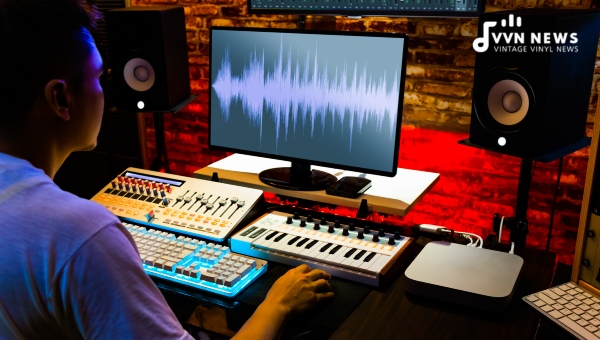
Sometimes, the best way to find inspiration for your own DIY studio desk is to see what others have done. In this section, we will showcase some impressive examples of homemade studio desks.
From sleek and modern designs to rustic and vintage setups, these projects highlight the creativity and ingenuity of their creators. Let’s take a closer look at these inspiring studio desks.
1. Modern Minimalist Masterpiece
This stylish desk features clean lines and a minimalist design that will complement any contemporary studio space.
With a combination of metal and wood materials, it strikes the perfect balance between functionality and aesthetics.
The retractable keyboard tray and built-in cable management system keep the workspace clutter-free, promoting productivity.
2. Vintage Audio Love Affair
For those who appreciate a touch of nostalgia in their workspace, this vintage-inspired desk is a dream come true. Crafted from reclaimed wood and adorned with retro audio equipment, it exudes charm and character.
The tabletop provides ample space for mixing consoles and MIDI controllers, while cleverly integrated shelves keep vinyl records within arm’s reach.
3. Sleek Space-Saver
If you’re working with limited studio space, this compact yet functional desk will be a game-changer.
Its sleek design includes foldable panels that can be extended when needed or tucked away to maximize floor space. Despite its small footprint, this desk offers plenty of storage options for equipment and accessories.
4. Ergonomic Excellence
Ergonomics are essential for long hours in the studio, which is why this desk focuses on providing a comfortable and user-friendly workspace.
The height-adjustable desk allows you to switch between sitting and standing positions, reducing strain on your body. Additionally, the curved desktop design promotes better posture and accessibility to equipment.
5. Industrial Chic
Embodying the industrial chic trend, this desk combines a metal frame with reclaimed wood for a rugged yet sophisticated look.
The spacious work surface accommodates multiple monitors or large synthesizers, while built-in storage compartments keep cables and accessories organized and out of sight.
Also Read: B Major: The Scale And Chords [Guide To This Bold & Beautiful Key]
Interviews with Creators
To delve deeper into the minds behind these stunning studio desks, I had the privilege of interviewing some of their creators. Here’s what they had to say about their design choices:
- John Adams (Modern Minimalist Masterpiece): “I wanted a desk that would blend seamlessly into my modern studio space. By using sleek metals and clean lines, I achieved a minimalist design that not only enhances productivity but also looks fantastic.”
- Emma Thompson (Vintage Audio Love Affair): “As an avid collector of vintage audio equipment, I wanted my studio desk to reflect my passion. By incorporating reclaimed wood and carefully selected retro gear, I created a workspace that inspires me creatively while evoking a sense of nostalgia.”
- Mark Wilson (Sleek Space-Saver): “I needed a desk that wouldn’t take up too much room in my small home studio. The foldable panels allow me to maximize space when necessary while still providing enough surface area for my equipment.”
- Sarah Jackson (Ergonomic Excellence): “As someone who spends long hours in the studio, I prioritize ergonomics to avoid discomfort or injury. A height-adjustable desk was essential for promoting better posture and reducing strain on my back.”
- Adam Cooper (Industrial Chic): “I have always been drawn to the industrial aesthetic, and I wanted my studio desk to reflect that style. By combining a metal frame with reclaimed wood, I achieved a look that is both rugged and refined.”
Through these interviews, it is evident that each creator had a unique vision and purpose behind their studio desk design. Their choices in materials, aesthetics, and functionality offer valuable insights for anyone embarking on their own DIY studio desk project.
By showcasing these impressive examples and sharing the thoughts of their creators, we hope to inspire you to create a one-of-a-kind workspace that perfectly suits your needs and reflects your personal style.
Remember, building a DIY studio desk is not just about functionality—it’s an opportunity to express your creativity in every aspect of the design process.
Troubleshooting Common Challenges in DIY Studio Desk Building
While building a DIY studio desk offers endless possibilities for customization, it is not without its challenges.
We will address three common hurdles that many DIY enthusiasts encounter: dealing with limited space, finding suitable materials on a budget, and ensuring the stability and durability of the finished desk. Let’s dive into each challenge and discuss practical solutions.
1. Dealing with Limited Space in Your Studio or Home Office
Limited space can pose a significant challenge when building a studio desk. However, there are several strategies you can employ to maximize your workspace:
Evaluate Available Space
- Carefully measure the dimensions of your studio or home office to determine the maximum desk size that will fit comfortably.
- Take note of existing furniture, doorways, and windows that might limit the placement and shape of your desk.
Utilize Vertical Space
- Incorporate shelves above or beside your desk for storing items like speakers, monitors, or books.
- Mount a magnetic board or pegboard on the wall above your desk to keep frequently used tools within reach.
Consider Corner Desks
- Corner desks take advantage of otherwise unused space while providing ample work surface area.
- Look for corner-specific DIY plans online or design your own using sheets of plywood cut on diagonal lines.
Compact Designs
- Search for compact DIY studio desk plans optimized for small spaces.
- Consider folding desks that can be stored away when not in use.
Remember to prioritize functionality over size. Markdown syntaxBy carefully planning how to make the most of limited space, you can still create an efficient and inspiring workspace.
2. Finding Suitable Materials on a Budget
Building a high-quality studio desk doesn’t have to break the bank. Markdown syntaxHere are some strategies for finding suitable materials while sticking to your budget:
Repurposing Materials
- Look around for unused furniture or salvaged wood that can be repurposed for your desk.
- Visit salvage yards, thrift stores, or online classifieds to find materials at discounted prices.
Plywood as a Budget-Friendly Option
- Opt for plywood, which is more affordable than solid wood and offers ample strength and stability when properly finished.
- Explore different grades and thicknesses of plywood to find the best balance between cost and durability.
Comparing Prices
- Shop around and compare prices from various local hardware stores or online suppliers.
- Look out for sales or promotions that can help you save money on materials.
Remember to prioritize quality over price. Markdown syntaxWhile budget constraints are understandable, sacrificing durability or stability may result in a subpar desk. By researching options and being resourceful in your material sourcing, you can find affordable options without compromising on the overall quality of your desk.
3. Ensuring Stability and Durability of the Finished Desk
A stable and durable desk is crucial for supporting your equipment and ensuring longevity. The following steps will help you achieve stability:
Solid Construction
- Follow detailed plans or tutorials that outline proper construction techniques.
- Reinforce joints with screws, brackets, or corner braces to enhance stability.
Use Appropriate Hardware
- Choose high-quality hardware such as strong screws, brackets, or drawer glides.
- Consider using adjustable feet to level the desk on uneven surfaces.
Reinforce Weak Points
- Identify potential weak points in the design where extra support may be necessary (e.g., long spans without additional bracing).
- Use additional support beams or crossbars underneath the tabletop to counter any sagging over time.
Optimize Weight Distribution
- Distribute heavy equipment evenly across the desk surface.
- Consider integrated cable management solutions to prevent excessive strain on cables plugged into devices.
It’s essential to remember that stability and durability go hand in hand with proper planning, construction techniques, and choosing sturdy materials.
Markdown syntaxBy paying attention to these factors, your finished DIY studio desk will be reliable and able to withstand the demands of your creative work.
By employing these troubleshooting techniques for limited space, budget constraints, and stability concerns, you can overcome common challenges in DIY studio desk building. Remember that each hurdle can be tackled with creativity and resourcefulness.
With the right approach and attention to detail, you’ll have a customized studio desk that fits your needs perfectly while elevating your creative workspace.
Also Read: How To Clean Your Flute [Keep Your Instrument Shiny & Sounding Great]
FAQ About DIY studio desk
Can I build a DIY studio desk if I have limited woodworking skills?
Absolutely! There are various DIY studio desk plans available online that cater to different skill levels. Choose a project that matches your expertise or start with simpler designs and gradually hone your woodworking skills.
How long does it typically take to build a DIY studio desk?
The time required to build a DIY studio desk depends on the complexity of the design and your familiarity with woodworking tools. On average, it can take anywhere from a few days to a couple of weeks to complete the project.
Will building my own studio desk save me money?
Yes! Building your own studio desk allows you to control the cost by selecting budget-friendly materials and repurposing existing furniture or equipment. This can result in significant savings compared to purchasing a ready-made desk.
Can I customize the size and features of the DIY studio desk plans?
Absolutely! One of the main advantages of building your own studio desk is customization. You can adjust the dimensions, add storage compartments or shelving, incorporate cable management solutions, and more according to your specific needs and preferences.
Where can I find inspiration for DIY studio desks?
Online platforms like Pinterest, YouTube, and various DIY websites offer a wealth of inspiration for DIY studio desks. You can find images, tutorials, and even interviews with creators who have successfully built their own customized desks.
Conclusion
Building your own DIY studio desk is a worthwhile endeavor that offers numerous benefits.
By customizing the desk to your specific needs, you can create a workspace that promotes productivity and creativity.
Not only does building a DIY studio desk save you money compared to buying a ready-made option, but it also allows for quality craftsmanship and durability.
Additionally, designing the desk aesthetics according to your personal style adds a unique touch to your workspace.
Remember to consider factors such as size, storage options, ergonomics, and wire management when planning your DIY studio desk project.
So get started on creating the perfect workspace that inspires you and supports your artistic endeavors!
